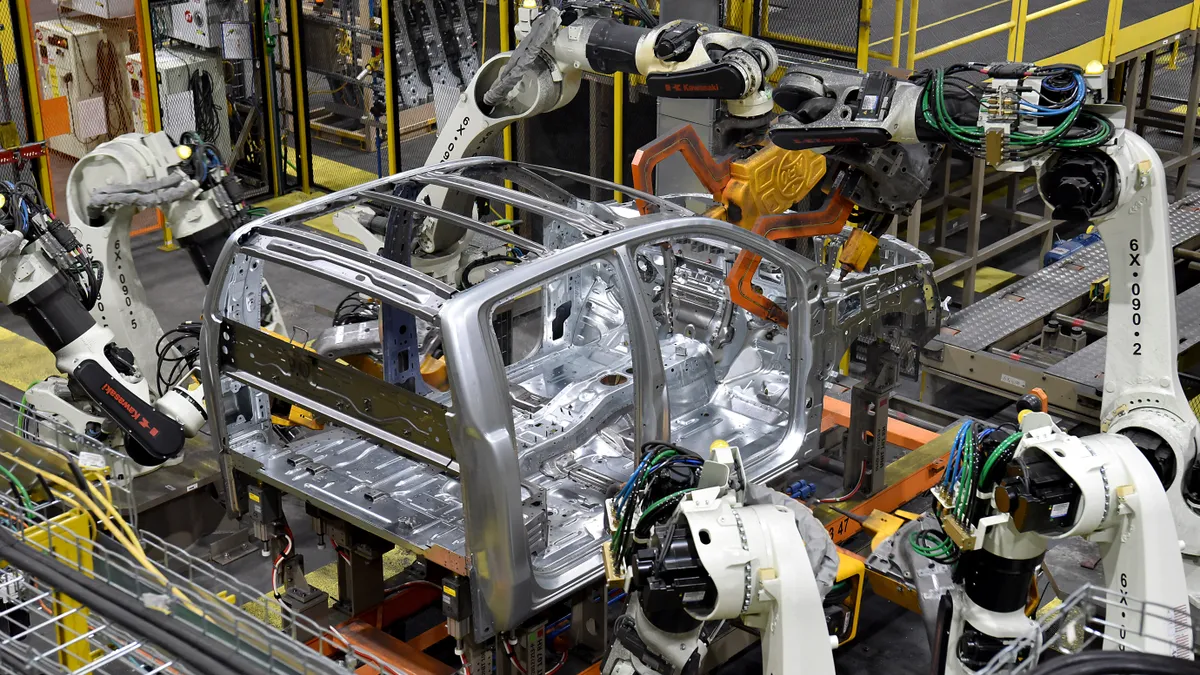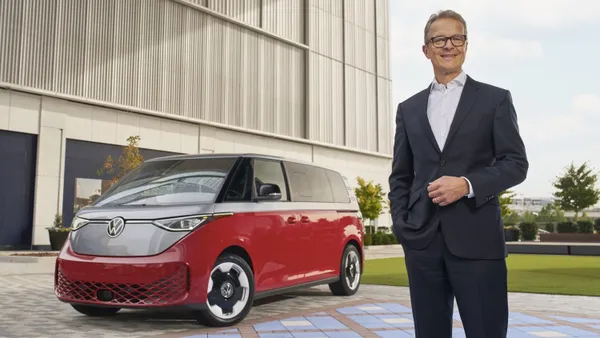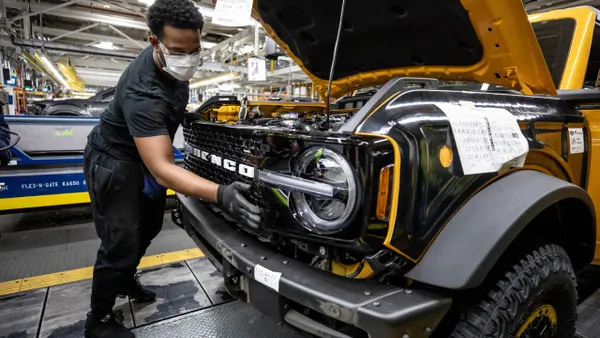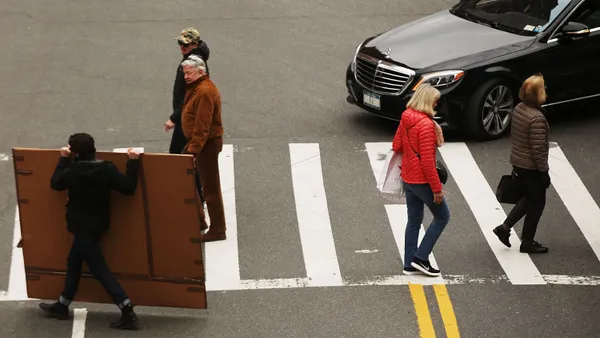Robots may not be the solution for automakers looking to offset rising labor costs after historic deals with the United Auto Workers, according to experts.
As wages for the highest-paid UAW workers at General Motors, Ford Motor Co. and Stellantis are slated to increase by more than 25% over the life of the contracts, automakers are feeling the pressure to lower expenses elsewhere. However, in conversations with Automotive Dive, experts said automation’s limited uses may limit manufacturers’ ability to save money.
Still, automotive executives are looking at all options. In a November call with investors, Ford CFO John Lawler said the company was looking at “opportunities in automation” to lower costs when discussing how much the UAW deal would cost the automaker.
That’s nothing new, however, as carmakers have been automating vehicle assembly for years, said K. Venkatesh Prasad, senior vice president of research and chief innovation officer at the Center for Automotive Research. The automotive industry has gradually replaced humans with robots for specific assembly line roles “almost independent of labor negotiations and the nature of labor,” he said.
Labor costs have been rising for years
Robots are often too expensive to replace humans
The UAW deal doesn’t make automakers more likely to replace autoworkers with robots at scale, said Dan Hearsch, the Americas leader of the automotive and industrial practice at AlixPartners.
Labor costs had increased for years before the UAW deals, and installing robots is hugely expensive, which only makes it appropriate for some tasks, Hearsch said.
“Generally, you’re going to go to automation and robotics in a case where you’ve got a dangerous or repetitive task [that] humans are less suited to,” Hearsch said. Robots, for instance, excel at lifting heavy objects for workers.
Such changes may not reduce labor costs or even the size of the workforce, said Arthur Wheaton, director of labor studies at Cornell University's School of Industrial and Labor Relations. While companies may hire fewer workers after installing robots, many will likely transition to other duties like quality control.
In addition, automakers must often hire people to program and maintain robots, and those roles usually command higher salaries than traditional manufacturing jobs.
“It may be cheaper to have somebody on an assembly line than it is to have the repair person come out and fix your broken automation,” Wheaton said.
That kind of shift “is not something you’re going to see overnight or in the next few months or years,” Prasad said. It is, however, “happening already, and it has been happening for a while.”
Automation can improve efficiency and safety
Experts said that automation can reduce costs in other ways, such as making assembly lines more efficient. Indeed, Lawler prefaced his investor call comments about automation by explaining that Ford is focused on “reducing the number of hours it takes to build a vehicle, simplifying designs and reducing complexity, as well as driving increased efficiencies through our factories.”
Greater automation can also improve working conditions for assembly line workers by giving automakers “better control of the human environment,” Prasad said.
Installing an instrument panel, for instance, is “one of the most ergonomically horrible jobs” because it requires autoworkers to twist and turn it to get it into place, Wheaton said. Robots can make the job safer for assembly line workers by holding the panel’s weight while the worker lines up and installs it. The arrangement allows automakers to use humans to ensure quality control while simultaneously using robots to reduce worker injuries.
Reducing bodily stress may also allow autoworkers to delay retirement and, in turn, allow automakers to pay them to assemble vehicles rather than fund their retirement benefits, at least for a few more years, Wheaton said.
Automation works best when companies use it to make work easier, not when they try to replace employees with robots, Wheaton said.
Wheaton pointed to Tesla as a cautionary tale, noting that the automaker installed too many robots at its assembly plant in Fremont, California, in 2018 and had to stop production for a week before adding new human workers, according to the Los Angeles Times.
CEO Elon Musk had previously said he wanted the factory to have so few humans that it looked like an “alien dreadnaught.” He later admitted that “humans are underrated.”










